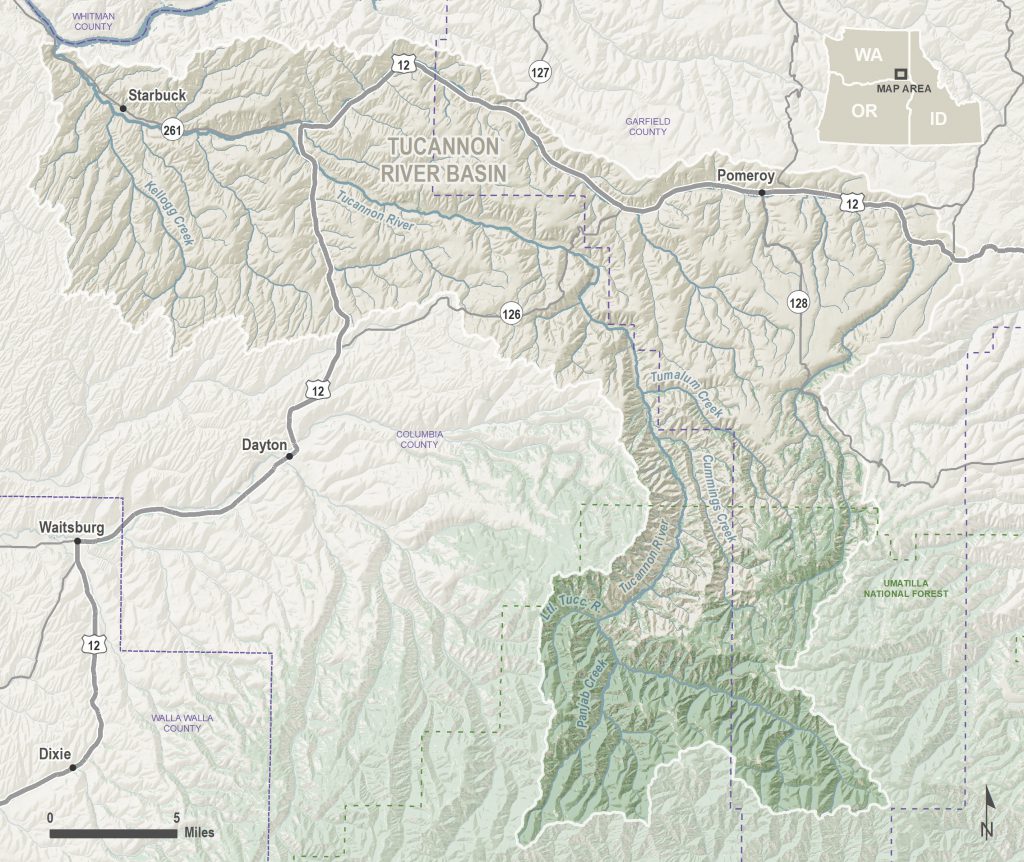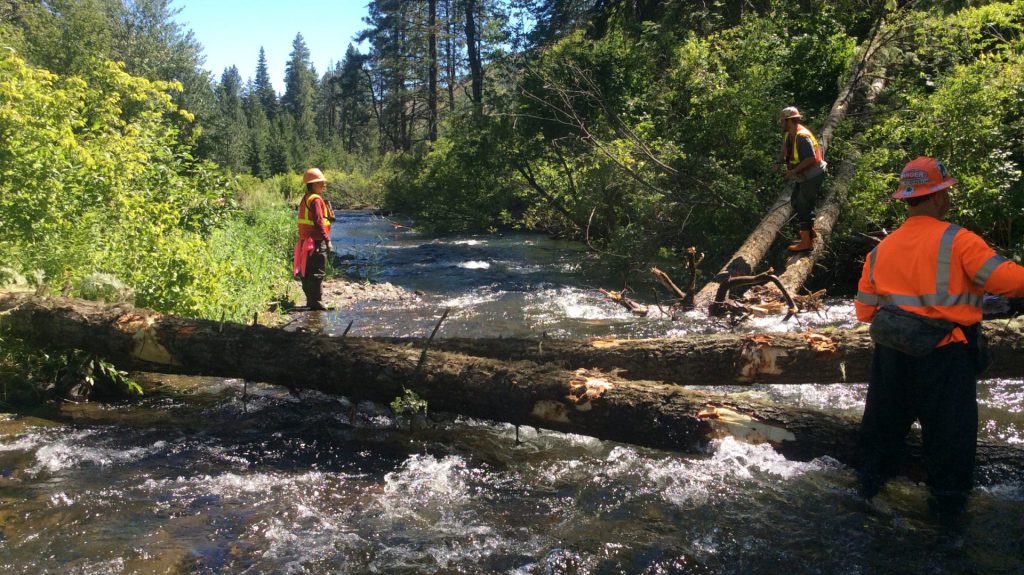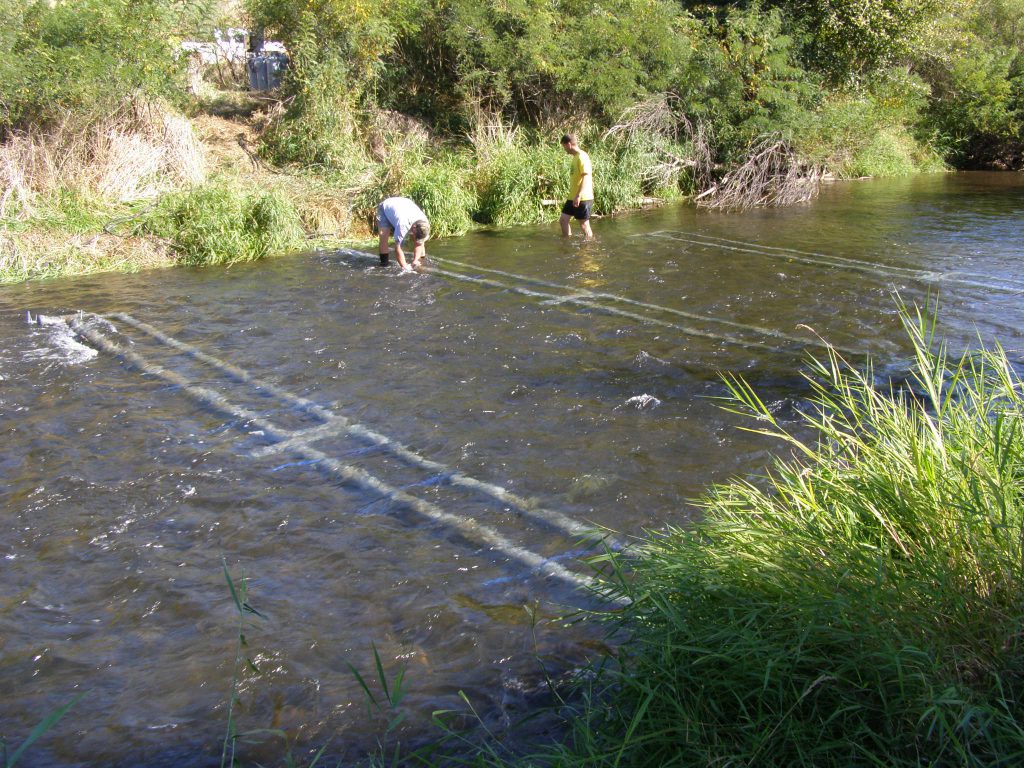The Tucannon River in Southeast Washington flows north out of the Blue Mountains into the Snake River and is the ancestral boundary between the Confederated Tribes of the Umatilla Indian Reservation and the Nez Perce Tribes. The Tucannon watershed supports the only remaining population of Spring Chinook (Oncorhynchus tshawytscha) in the lower Snake River.

While the Tucannon once produced thousands of salmon annually it currently produces only a few hundred adult Spring Chinook each year. In 1992, Spring Chinook were listed as threatened under the Endangered Species Act as runs declined to less than 200 adult fish.
Past land use practices including logging, livestock grazing, irrigated agriculture and construction of the Tucannon Lakes in addition to recent large forest fires in the headwaters have created conditions in the Tucannon River that have over-simplified the stream channel and drastically reduced the potential to produce a sustainable Chinook population. Channel simplification caused by channel confinement (levees, lakes, roads) and straightening (pushing the channel to the valley wall) has led to a loss of floodplain connectivity (channel incision), increased stream velocities, and loss of pool habitat.
These factors have combined to decrease quality habitat for adult and juvenile Spring Chinook salmon, steelhead, and Bull Trout, leaving these unique populations at risk.
What is being done?
To recover the salmon population in the Tucannon, a cooperative of organizations including local landowners work together to restore the river habitat to provide a healthy environment for fish to thrive. Habitat restoration and population supplementation (hatchery release) are two of our strategies.
The intensity and relative proportion of stream restoration efforts in the Tucannon are unprecedented in the Pacific Northwest. What makes habitat project implementation in the Tucannon so unique is the relative scale and amount of habitat restoration efforts. To slow the water down and provide cooler temperatures and favorable fish environs, we replace large “woody debris” in the river on private, state, and federal lands.
With no navigable waters in the Tucannon, we can place channel-spanning wood structures that cause the return of natural processes of aggradation of the streambed to restore floodplain connectivity for salmon and steelhead. Often pools are the measure of success, but in the Tucannon before pool creation can happen, the bed itself must aggrade before there is enough gravel to naturally form a pool. Therefore, large wood is used to slow velocities in the channel to deposit gravel for the restoration of natural processes.
Already we’ve completed over 13.2 miles of floodplain project implementation, which includes approximately 40 large wood jams per mile in the 56 mile focus area in the Tucannon. Our goal: by 2019, 46% of the mainstem Tucannon River will have experienced restoration.

What are the results?
Currently, the Tucannon River has the existing personnel and physical infrastructure for monitoring success. These monitoring efforts are beginning to provide the information necessary to document measurable progress.
Beyond the out-of-basin PIT tag arrays, the Tucannon utilizes four in-basin arrays as well as a smolt trap, all of which are maintained and operated by WDFW. Additionally, there are 52 established habitat monitoring sites that are coordinated and utilized to support multiple monitoring efforts, including BPA, SRFB, and WDFW habitat monitoring for project action effectiveness and watershed status and trends. The Tucannon has a large number of tagged fish with additional tagging efforts planned which provide the basis for understanding salmon and steelhead survival.

Preliminary data from ongoing Tucannon monitoring efforts to date show the following results:
- Minimum summer base flow in the Tucannon has increased by approximately 10-12 cfs over the last 14 years; over the same period, average daily maximum water temperatures have decreased by approximately 2.7° F while average daily maximum air temperatures have increased by approximately 2.7° F.
Benefit: High temperatures put the fish in distress or cause death, so this is a significant win!
- The removal of over 2.5 miles of levee has reconnected 186 acres of previously inaccessible floodplain to the river.
Benefit: Wider floodplain provides the river water opportunity to slow down to pick up more nutrients and mix with the water table (hyporheic exchange).
- In-stream structural complexity has increased following project implementation primarily due to the addition of large wood (>5000 pieces) and formation of additional pool habitat (20% increase), mid-channel bars (99% increase), and side channels (7.5 miles created or reconnected).
Benefit: Slows the water for hyporheic exchange and offers excellent places in the river for fish to thrive.
- Improvements in habitat conditions following project implementation have increased the modeled carrying capacity for juvenile Chinook by 10%.
Benefit: This habitat restoration provides physical environment that enables more fish to live in the river.
- Preliminary project data following project implementation shows juvenile Chinook densities increased by between 38-89% compared to control reaches sampled at the same time.
Benefit: More fish! Our efforts are paying off!
- Pre-project monitoring data are being used by sponsors to optimize designs, and post-project data are being used to instigate and justify adaptive management actions to improve project function.
Benefit: Measuring before and after effects enable us to tune our projects to know what changes make the most difference in salmon recovery.
- Fish monitoring efforts in coordination with habitat monitoring are providing an indication of project effectiveness, fish-habitat relationships, and population level abundance and survival estimates.
Benefit: Ongoing measurement provides metric-based knowledge to improve future decision making to maximize effectiveness in salmon recovery.
What’s next?
To allow for ongoing habitat restoration success in the Tucannon, continued funding of a locally coordinated monitoring effort for both habitat and fish population response is required.
This effort must be aligned with the ongoing restoration efforts. Here in the Tucannon, we have several examples of how this has been successfully done.
- Showing value to our local landowners and stakeholders for project support and also project implementation,
- Use of monitoring data to document LWD structure stability,
- Started to redistribute restoration efforts based on migration timing and survival of Chinook,
- Utilizing monitoring data at a 2014 project implemented site to make the case for adaptive management,
- Use of information on wood diameter and size and fish response to justify utilizing larger wood in restoration design and implementation.
We have a locally supported and coordinated effort and hope that BPA and other funding agencies will continue to support these successful efforts.


